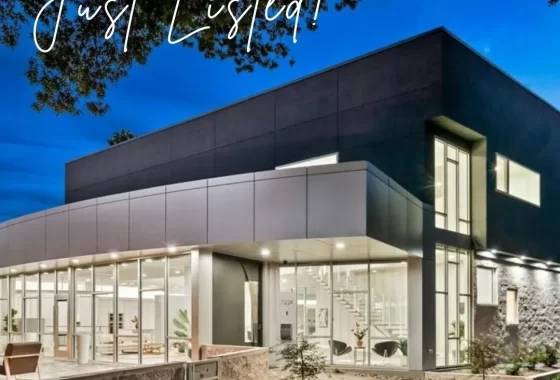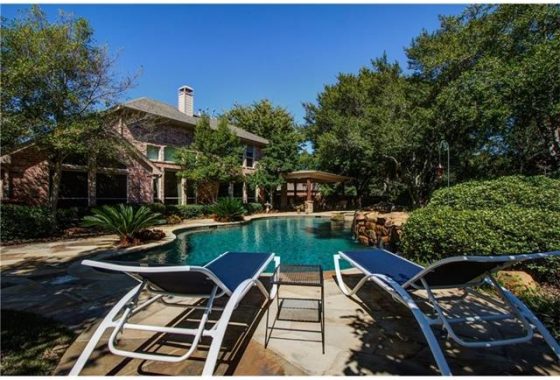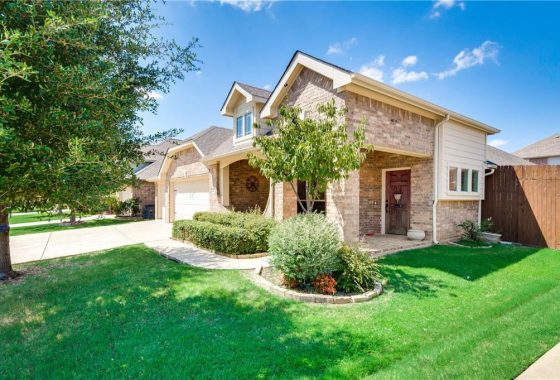Plano
City of ExcellenceApproximately 80% of Plano’s visitors are business travelers, due to its close proximity to Dallas and the many corporations headquartered in Plano. The city also has a convention center that is owned and operated by the city.
Plano has made a concerted effort to draw retail to its downtown area and the Shops at Legacy in an effort to boost sales tax returns. The Shops at Legacy area has apartments, shops, and restaurants constructed with the New Urbanism philosophy. An experimental luxury Walmart Supercenter is located at Park Boulevard and the Dallas North Tollway.
Some of the country’s largest and most recognized companies have their headquarters in Plano. Tree-lined Legacy Drive in the 75024 ZIP code, between Preston Road and the Dallas North Tollway, has many corporate campuses.
In 2014 Toyota Motor North America announced its U.S. headquarters will move from Torrance, California in the Los Angeles metropolitan area to Plano. In 2015, Liberty Mutual also announced their plans to build a new corporate campus just a few blocks east of Toyota, bringing an estimated 5,000 jobs to the community. In January 2016 JP Morgan Chase and mortgage giant Fannie Mae announced they would be moving regional operations to Plano, bringing a combined 7,000 new jobs to the community.
As of the census of 2010, Plano had 259,841 people, 99,131 households and 69,464 families, up from 80,875 households and 60,575 families in the 2000 census. The population density was 3,629.1 people per square mile (1,400.8/km2). There were 103,672 housing units at an average density of 1,448.6 per square mile (559.3/km2). The racial makeup of the city was 66.9% White (58.4% Non-Hispanic White), 7.6% Black, 0.36% Native American, 16.9% Asian, 0.1% Pacific Islander, 3.86% from other races, and 3.0% from two or more races. Hispanic or Latino of any race were 14.7% of the population.
As of 2009 western Plano has a higher concentration of Asians, while eastern Plano has a higher concentration of Hispanics and Latinos.
Of the 99,131 households, 35.8% had children under the age of 18. Married couples accounted for 56.7%; 9.7% had a female householder with no husband present, and 29.9% were non-families. Approximately 24.4% of all households were individuals, and 5.3% had someone living alone who was 65 years of age or older. The average household size was 2.61, and the average family size was 3.15.
Data indicates that 28.7% of Plano’s population was under the age of 18, 7.0% was 18 to 24, 36.5% was 25 to 44, 22.9% was 45 to 64, and 4.9% was 65 years of age or older. The median age was 34 years. For every 100 females, there were 99.3 males. For every 100 females age 18 and over, there were 97.2 males.
According to a 2007 estimate, the median income for a household in the city was $84,492, and the median income for a family is $101,616. About 3.0% of families and 4.3% of the population live below the poverty line, including 4.6% of those under age 18 and 7.8% of those age 65 or over.
In 2007, Plano had the highest median income of a city with a population exceeding 250,000 in the nation, at $84,492. As of 2010, Plano has a median income of $103,913 annually. According to crime statistics, there were four homicides in Plano in 2006, the lowest homicide rate of all U.S. cities of 250,000 or more population.
There are 70 public schools, 16 private schools, two campuses of the Collin County Community College District (Collin College), and six libraries in Plano.
Primary and secondary schools
Plano West Senior High School
The Plano Independent School District serves most of the city. Student enrollment has increased dramatically over the past few decades. Plano has a unique high school system, in which grades 9-10 attend a high school and grades 11-12 attend a senior high. There are three senior high schools (grades 11-12) in PISD; Plano East, Plano, and Plano West. In Newsweek’s 2012 list of best national high schools, Plano West was ranked as 63rd, Plano Senior as 108th, and Plano East as 243rd. Small portions of Plano are served by the Lewisville Independent School District, Frisco Independent School District, and Allen Independent School District.
Plano schools graduate more of their students than comparable districts. In 2010, 93% of Plano Independent Student District students graduated from high school, 18 percentage points more than Dallas ISD’s rate. In 2012, Plano Independent School District announced that 128 seniors were selected as National Merit Semifinalists.
Plano has given $1.2 billion in property tax revenue to other school districts through the Texas “Robin Hood” law, which requires school districts that are designated as affluent to give a percentage of their property tax revenue to other districts outside of the county. In 2008, PISD gave $86 million. Controversy erupted when the salaries of teachers in less affluent districts, like Garland ISD, exceeded the salaries of teachers in districts that had to pay into “Robin Hood”.
In the 2013-14 school year, Plano ISD has opened two 4-year high school Academies, one focusing on STEAM (STEM education plus Media Arts) and the other on health science. Additionally, the district has modified its existing International Baccalaureate program to allow freshman and sophomores in the program to be housed at Plano East Senior High School.
In addition to Catholic primary and middle schools, the Roman Catholic Diocese of Dallas operates John Paul II High School in Plano. Non-Catholic private schools in Plano include Great Lakes Academy, Spring Creek Academy, Yorktown Education, and Prestonwood Christian Academy. In addition, the Collin County campus of Coram Deo Academy is located in the One Church (previously Four Corners Church) facility in Plano.
Colleges and universities
Entrance to the Spring Creek campus of Collin College in Plano, Texas
Plano is the home to two campuses of Collin College, one at the Courtyard Center on Preston Park Boulevard and the larger Spring Creek Campus on Spring Creek Parkway at Jupiter. SMU-in-Plano, formerly SMU-in-Legacy, a branch of Southern Methodist University, is a graduate university serving the needs of 3,000 working professionals. Its academic programs include business, engineering and computer training, education and continuing education. It also features The Guildhall at SMU, which offers a masters program in video game development. DBU North, a satellite campus of Dallas Baptist University, is located in West Plano, and offers undergraduate and graduate courses, as well as houses admissions and academic counseling offices.
Public libraries
The Plano Public Library System (PPLS) consists of the W.O. Haggard, Jr. Library, the Maribelle M. Davis Library, the Gladys Harrington Library, the Christopher A. Parr Library, the L.E.R. Schimelpfenig Library, and the Municipal Reference Library. The Haggard library houses the system’s administrative offices.
Miscellaneous education
Many Chinese parents in Plano enroll their children in supplementary schools, where they get additional mathematics education and/or Chinese language education.
European settlers came to the area near present-day Plano in the early 1840s. Facilities such as a sawmill, a gristmill, and a store soon brought more people to the area. A mail service was established, and after rejecting several names for the nascent town (including naming it in honor of then-President Millard Fillmore), residents suggested the name Plano (from the Spanish word for “flat”), as a reference to the local terrain. The name was accepted by the post office.
In 1872, the completion of the Houston and Central Texas Railway helped the city to grow, and it was incorporated in 1873. By 1874, the population had grown to more than 500. In 1881, a fire raged through the business district, destroying most of the buildings. The town was rebuilt and business again flourished through the 1880s. Also in 1881, the city assumed responsibility for what would eventually become Plano Independent School District (PISD), ending the days of it being served only by private schools.
At first, the population of Plano grew slowly, reaching 1,304 in 1900, and rising to 3,695 in 1960. By 1970, Plano began to feel some of the boom its neighbors had experienced after World War II. A series of public works projects and a change in taxes that removed the farming community from the town helped increase the overall population. In 1970, the population reached 17,872, and by 1980, it had exploded to 72,000. Sewers, schools and street development kept pace with this massive increase, largely because of Plano’s flat topography, grid layout and planning initiatives.
During the 1980s, many large corporations moved their headquarters to the city, including J. C. Penney and Frito-Lay, which encouraged further growth. By 1990, the population reached 128,713, dwarfing the county seat of McKinney. In 1994, the city was recognized as an All-America City. By 2000, the population grew to 222,030, making it one of the largest suburbs of Dallas. Plano is surrounded by other municipalities and therefore cannot expand in area, and there is little undeveloped land remaining within the city limits. However, as of July 2012, one large tract of land was being developed. Turnpike Commons at the intersection of Renner Rd and the George Bush Turnpike (bordered also by Shiloh Rd to the east). The development is expected to feature apartments, medical facilities, restaurants, a Race Trac gas station, and a hotel.
There was an epidemic of heroin abuse among young people in the 1990s. The Plano authorities created an anti-drug campaign with the name “Operation Rockfest”.
In 2013, Plano received top-scoring nationally in a livability index according to an algorithm created by AreaVibes.com, a Toronto-based company specializing in such data. The chart can be found here Best Places to Live in America. AreaVibes ranked Plano at the top of the list of U.S. cities with populations between 100,000 and 10,000,000. Another chart, Best Places to Live in 2013, also has Plano ranked number 1.
Although Plano is named for the flat plains of the area, large trees abound in the city’s many parks. One such tree, estimated to be over 500 years old, resides in Bob Woodruff park near Rowlett Creek on the city’s east side.
The two main Open Space Preserves, Bob Woodruff Park (321 acres) and Oak Point Park and Nature Preserve (801 acres), are connected by biking trails making the green space one large uninterrupted park space that is larger than Central Park in New York City (840 acres). Total acreage of all spaces managed by the Parks department currently totals 3,830.81. The Plano Master Plan has the acreage growing to 4,092.63 when complete.
There are five recreation centers. They are Tom Muehlenbeck Center, Carpenter Park Recreation Center, Oak Point Recreation Center, Liberty Recreation Center, and Douglass Community Center. For pet owners, there is The Dog Park at Jack Carter Park.
The City of Plano also owns and operates three performing arts venues under the auspices of the Parks and Recreation Department. These venues include the Courtyard Theater, the Cox Playhouse, and the Amphitheater at Oak Point Park. A fourth performance venue, McCall Plaza, is currently under construction in the historic Downtown Plano neighborhood.
- Neighborhood Parks: 249.13 acres
- Linear Parks: 629.27 acres
- Community Parks: 1,120.65 acres
- Open Space Preserves: 1,324.13 acres
- Special Use Areas: 46.57 acres
- Golf Courses: 461.06 acres
Recent Plano and Surrounding Area Listings
© 2017 North Texas Real Estate Information Systems. All rights reserved. The data relating to real estate for sale or lease on this web site comes in part from NTREIS. Real estate listings held by brokerage firms other than Texas Upstart Group - Exclusive Realty Group are marked with the NTREIS logo or an abbreviated logo and detailed information about them includes the name of the listing broker. Data is deemed reliable, but not guaranteed accurate by the MLS or NTREIS. IDX information is provided exclusively for consumers' personal, non-commercial use and may not be used for any purpose other than to identify prospective properties consumers may be interested in purchasing. Data last updated 02-13-2017.
Texas Real Estate Commission Consumer Protection Notice
Texas Real Estate Commission Information About Brokerage Services



